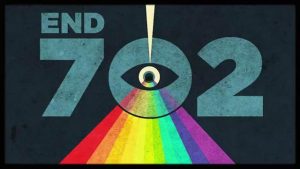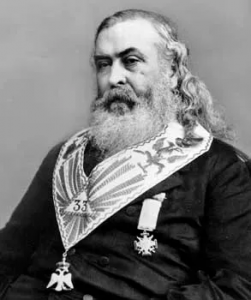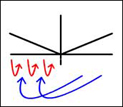“Nicaragua Betrayed” Summary— Chapter 16: The Final Attack
by Edward Ulrich
News of Interest.TV
February 20, 2011
This chapter describes massive assaults that Nicaragua endured in 1979 from thousands of well-armed troops pouring over the borders from Costa Rica and Honduras, which the Organization of American States (OAS) refused to sanction. The people of Nicaragua had the will to fight to protect their country, but supplies of ammunition were cut off by the United States along with other embargoes; and other Central American countries were pressured by the United States to sign a resolution that demanded that Somoza step down from the Presidency in order to empower the totalitarian Communist Sandinista government that was then installed.
Following are key points from the chapter:
— In early May 1979, the attacks from Costa Rica were continually becoming more intense every day, and despite Nicaragua pleading with the OAS (Organization of American States), the organization refused to investigate.
— For four and a half months the area of the entry of the Pan American Highway into Nicaragua was being shelled from Costa Rica, even while a negotiating team was in Managua. The U.S. and other countries were aware of the situation, as well as all those in Central America who tried to travel through that area, but not one country or person in the OAS would come forward to say that international law must be upheld, despite the entire Central American Common Market being harmed by the activity due to people being afraid to ship goods and merchandise on the highway. Somoza comments about how the U.S. always proclaims that all are equal in the eyes of the law including international law, but international law and Nicaragua’s sovereignty were being violated every day and the Carter Administration took the side of the lawbreakers.
— Somoza is certain that the world will judge the President of Costa Rica Rodrigo Carazo and also President Jimmy Carter harshly for allowing Costa Rica to be used as a staging area for Communist invasion forces into Nicaragua and thus eventually the rest of Central America.
— Somoza held a meeting with the Presidents of El Salvador, Guatemala, and Honduras, and despite them having sympathy for his cause and being made aware that Somoza’s battle is actually also their battle, they did not extend their national support out of fears of reprisals from the United States. Somoza says, “My final plea was in vain. I had their hearts but I did not have their hands. The pressure from the United States was too great. ... The man they feared was Jimmy Carter, and Mr. Carter had told them in no uncertain terms, what their posture had to be in regard to Nicaragua.”
— Somoza compares his situation to being on the wrong side of a weakened dam, with the United States directing the gate control valves of smaller dams upstream to be turned to full open.
— Starting on May 27, 1979, continuous attacks by Sandinista guerrilla forces started commencing in the cities of Jinotega, Santa Cruz, and El Naranjo, and in each case the attacking forces were routed by Nicaragua’s Gaurdia Nacional who were greatly outnumbered.
— In early June, Nicaragua was being attacked in Managua, Massaya, Esteli, Matagalpa, Leon, and Chinandega by well equipped forces who knew military strategy and had a plan. In each city they would surround the local police centers which were also command posts for the Guardia Nacional. While these attacks were being thwarted, it was learned that an entire army of over five thousand troops were crossing over from Costa Rica, and it was learned that they had extremely sophisticated and powerful weapons that only major armies have and Nicaragua did not posses. Also, the government of Panama announced that if revolutionary forces capture a city in Nicaragua, then Panama would immediately recognize the provincial government of the Sandinistas. While all of this was happening, there was not one voice of protest in the OAS, which indicates that the organization could never again command the respect of any nation.
— The Guerrillas took the farm of Dr. Cornelio Hueck, former President of the Nicaraguan Congress, and he was taken to the town of Tola which was the parochial responsibility of Father Garcia Liviano who was a militant Communist, and Hueck was tortured and publicly sacrificed.
— While these battles were raging, Nicaragua was expecting a ship from Israel loaded with arms and ammunition which could match the attacking forces, however the ship turned back without delivering the weapons despite the fact that the weapons were paid for before the ship left Israel. The shipment could have easily turned the tide of the war. Later it was learned that the U.S. ordered the ship to return to its port, and Somoza laments that somewhere in Israel is a large consignment of powerful arms and ammunition that could have saved Nicaragua.
— The U.S. would not supply weaponry to Nicaragua, so Nicaragua’s only option was to use their air force to bomb the enemy, which the international media castigated them for doing, but the media never mentioned that the attacking forces had much more powerful and sophisticated weaponry than Nicaragua had.
— Somoza says Carter continually lied about not knowing that international law was being violated, because everything that was happening was being reported to the U.S. Embassy, which reported to the White House and U.S. State Department.
— When the U.S. saw that Somoza was going to stick it out and fight, they passed a resolution through the OAS condemning the government of Nicaragua, which essentially ensured that their major suppliers would not be able to legally sell arms to Nicaragua.
— Somoza says, “By then, an avalanche of men, arms, and equipment were pouring into Nicaragua from Costa Rica. Open vans and trucks, loaded with weaponry, were being brazenly driven across the entire length of Costa Rica. Those, of course, were coming from Panama. At the airport in Liberia, Costa Rica, flights were arriving daily from Panama. Those were carrying both men and supplies. The perfidy of it all was beyond imagination. Who would believe that during all of this treachery, an OAS observer was sitting in Costa Rica? ...”
— By late June 1979, Somoza could see that the game was over and his chief concerns turned to the welfare of the members of the Guardia Nacional and members of the Liberal Party, and he started a dialogue with U.S. Ambassador Pezzullo about agreements to ensure that such people would not be imprisioned or killed.
— The problem which sealed the fate of Somoza’s troops was only the fact that they ran out of ammunition. As many as sixteen thousand Nicaraguan troops had the will and determination to fight to protect their country. Somoza says, “When a man is fighting for the preservation of that piece of land on which he was born, when a man is fighting for his home and family, you can be sure that he will do so with all his might. ... They were fighting and dying to protect themselves against a conglomeration of foreign invaders. Try to put yourself in their position and you will see that the adrenaline in your system automatically increases to maximum proportions.”
— It was then becoming clear to the invaders that Somoza’s forces were running out of ammunition, and all sources of further weaponry had been blocked by the United States.
— Nicaragua was running out of dollars and was counting on their coffee exports for more revenue, but no shipping company would agree to come into Nicaragua’s ports despite the fact that the ports were safe, due to U.S. pressure.
— News releases from the Communist party in Mexico, Columbia, Panama, and Venezuela announced that they would be sending international brigades to Nicaragua, despite each country being a member of the OAS and their doing so was in violation of their charter, but not one country raised a complaint. Somoza says, “I can only conclude those countries are extremely weak, or they have a deep fear of the Left.”
— In June, Nicaragua had a chance to participate in hearings in Washington D.C. before the subcommittee on the Panama Canal. They brought examples of captured weaponry to show what they were being attacked with, and Vice President of the Nicaraguan Congress Luis Pallais gave a speech detailing the predicament that Nicaragua is in (The speech is reproduced in full in the book.) Somoza explains that the subcommittee was very impressed, but “the die was already cast for Nicaragua.”
— Somoza explains they had a highly sophisticated system of communication, and at no time did he lose contact with his department commanders, and at all times they knew what was transpiring. It was also possible to monitor the communication of the invading forces, which was helpful. Somoza recalls a tragic situation where he was on the line with the commander in a police headquarters in Leon who was under attack by Chinese RPG rockets supplied by Cuba, and he could hear the devastation happening during the conversation.
— Somoza then goes into greater detail in the book about aspects of the May offensive. Some of the issues spoken about are as follows:
— Somoza talks about how in the past he had allocated only 10 percent of Nicaragua’s budget to defense due to no external threats existing at the time, and instead the money went to maximize development for the country. He explains he had no reason to believe Nicaragua should have fear of international aggression and they had no territorial disputes with neighbors. Nicaragua had not purchased any sophisticated military machinery since 1957.
— Nicaragua had been developing airstrips to supply service to remote agricultural areas, but now these airstrips were being used by the invading forces for bringing in troops and weapons. The airstrips could not be disabled because they were still needed for their original purpose as well.
— The invading forces were using a technique that the Nicaraguans were not familiar with which may have been taught by the PLO in the Middle East, which was cutting holes in the sides of buildings they occupied to fire out from which allowed them to move from one building to another without exposing themselves. Somoza explains a tragic situation where it was decided that a police headquarters that was surrounded needed to be abandoned, and from the time the troops started their evacuation to the time they arrived in another city they were completely exposed, with most being gunned down along the way due to the attackers having the protection of the walls.
— Somoza explains that President Carter’s “Human Rights” campaign was actually a “Human Bloodshed” campaign which was responsible for the deaths of thousands of people. Also, after the Marxist victory, thousands of innocent people were killed and the mayhem continues to this day. The people of Nicaragua now have no rights, and the jails are full of political prisoners who committed no crime. Many of the people are in jail only because they have been accused of being a Somocista member or a member of the Liberal Party.
— Several affluent business leaders who opposed Somoza and supported the Sandinistas are now in jail and had their property confiscated by the Marxist government. Many are now broke and walking the streets of Miami.
— Before the Carer Administration came to power, Nicaragua had a total of only five thousand policemen, yet Nicaragua was secure, free, and prosperous.
— The training techniques of the Nicaraguan armed forces were patterned after the United States, and Nicaragua’s military academy was patterned after West Point and it turned out excellent officers, having a constant flow of cadets from all over Latin America. Over a period of years, Nicaragua sent over fourteen thousand men through various military training programs in the United States, and many of those men are now either in Nicaraguan prisons or wandering around the rest of the world.
— Nicaragua was often referred to as “The U.S.A. of Central America.” Somoza’s idea was to expose as many Nicaraguans as possible to the U.S. way of life so its people could understand freedom and democracy, as see what a capitalistic society could produce. He did his best to create a United States kind of atmosphere in Nicaragua and he was succeeding, which is why he calls the actions of Jimmy Carter a “total betrayal.”
— From page 263:
The negotiations with U.S. Ambassador Pezzullo continued. Pezzullo was in regular contact with the opposition leadership, and at intervals he and I would have a session. On one such visit, toward the end, the Ambassador came to my office and said that arrangements had been made for me and my family to go to the United States and that upon my departure, the U.S. would endeavor to keep the Guardia Nacional intact and give special attention to members of the Liberal Party. He told me the United States would grant me a visa, and that a residence visa could be obtained because Mrs. Somoza was a U.S. citizen. Further, he stated that the U.S. would receive me as Chief of State and that I would be provided security. That was what I was waiting to hear from the United States.
Then I got in touch with my brother, Jose, and my son, Tacho. I explained to them that we were in an impossible situation, and that we were running out of ammunition and there was no more coming. I told them that with our departure, there was a possibility that we could save the Guardia Nacional and the Liberal Party. I explained, also, that due to the unprecedented resolution of the OAS, I had a legitimate reason to resign.
[Note: In a later chapter it is explained how after Somoza had been in the United States for only six hours, he was advised that Jimmy Carter did not want him in the country despite the agreement with Pezzullo, so Somoza had to fly to the Bahamas and then eventually to Paraguay.]
— An OAS resolution was passed which demanded a complete reposition of the government that they actually called by Somoza’s name. Many of the countries that voted against Nicaragua were sympathetic but voted as they did because of U.S. pressure.
— Members of Nicaragua’s Congress were flown out to Miami over a period of ten straight days.
— Somoza then submitted his resignation to Congress which is as follows:
Having consulted the governments which are interested in the pacification of the country, I have decided to accept the resolution of the Organization of the American States, and by this means, I resign the Presidency from which I was popularly elected. My resignation is irrevocable.
I have fought against Communism, and I believe that when the truth is known, history will say I was right.
A. Somoza
President of the Republic
“So in the early morning hours of July 17, 1979, the Cabinet, General Staff, department commanders, the Congress, and the Board of Directors of the Liberal Party made their way to the airport. I was able to get all of them out of the country before the new Marxist government began its bloodbath.”
Purchase the book “Nicaragua Betrayed” from Amazon.com.








